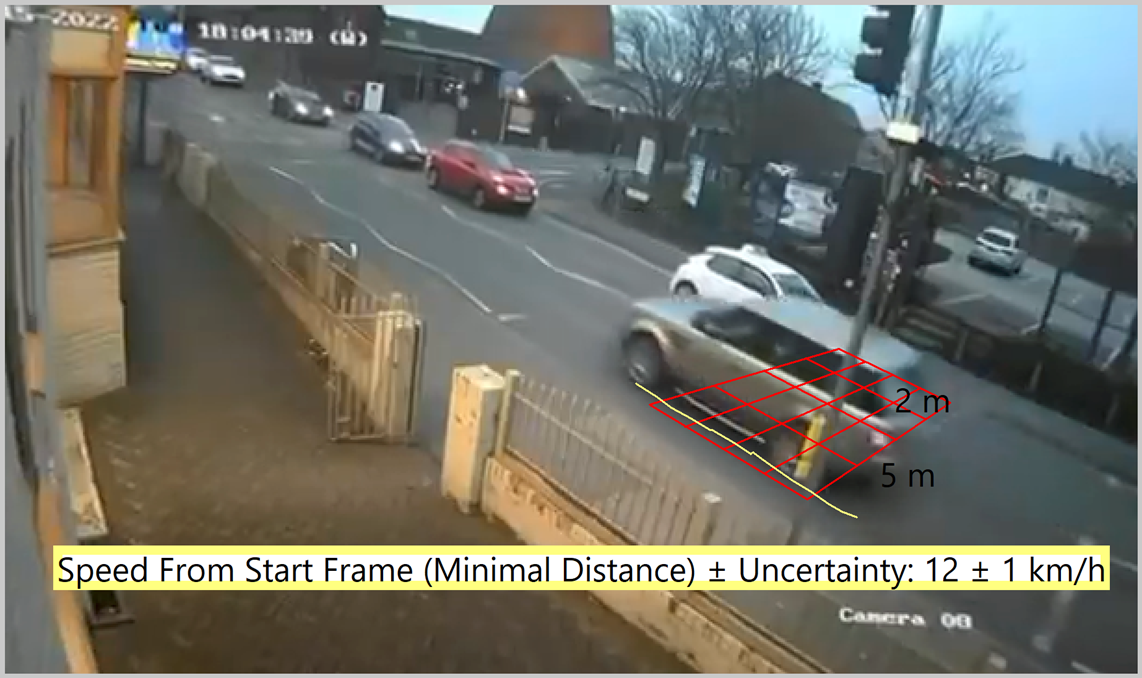Si Biles, co-host of the Forensic Focus podcast, reviews the Speed Estimation 2d filter in Amped FIVE and Amped Software’s advanced “Measurements and Speed Estimation” training module.
My physics teacher would be proud – there are certain things that, after <ahem> several years, I can still vividly recall, these include the various equations for speed, acceleration and distance. For example:

I can remember applying these to pass exams with a reasonable degree of success, and I never found them particularly challenging to apply or rework. And, given that the remainder of the things that I can recall from school basically can be boiled down to how to order a beer in a couple of languages other than English and a few useless quotes from Shakespeare, the actual usefulness of these sets them apart.
Thus, the fundamental logic that sits behind the “2d Speed Estimation” filter in Amped FIVE made a lot of sense to me. To wit, I have a video of a particular time, in it I can see an object move a given distance, therefore logically I should be able to calculate the speed.
Would that it were so simple![1] To say that this is an oversimplification is somewhat of an understatement. First of all, it isn’t as if the average CCTV clip shows a car progressing amiably in the same plane as a suitably calibrated tape measure. Secondly, time is astonishingly variable in CCTV I have learned – all frames are equal, just some are more equal than others …
I’d had the outline operation of the filter shown to me in London last year (2022) at the Counter Terror Expo and Forensics Europe Expo at the ExCeL in London[2], but I was lucky enough to be able to attend Amped’s online training session on “Measurements and Speed Estimation” with the esteemed Blake Sawyer to be properly educated in the nuts and bolts of the filter.
Referring, for a second, back to my dredged-up equations. We need to derive two things for us to be able to estimate a speed – the distance and the time. Distance first, then we’ll return to the time.
As I alluded to, with the exception of speed cameras perhaps – where there may be a conveniently marked graduated scale on the roadway, generally speaking we don’t have a clear marker to calculate our distance over. In the Amped FIVE tool, there exist a number of filters that – with some known measurements – allow for the additional measurements of objects in a frame. These are – not originally, but sensibly named – “Measure 1d”, “Measure 2d” and, yes, you’ve guessed it, “Measure 3d”.
The training starts at the beginning, and you work your way through various examples and dimensions, measuring objects (and people) in the numerous images and videos that are provided for the class in a bundle beforehand. Getting the level of complexity in examples for training is a bit of an art form, and I think that Amped did a pretty good job on this front[3]. At no point was I lagging behind (a little bit of a concern for me when I started as I was using a virtual machine to run the trial of Amped FIVE on), nor was I surging ahead and feeling that I was waiting for the trainer to keep up. The challenges built on each other and grew in complexity in a sensible way, adding new techniques onto those already learned.
My peers in the class were all more experienced FIVE users than I, and this particular module is not an introductory one – nonetheless I didn’t struggle[4]. What I did notice though, perhaps with the eye of someone coming to it fresh as opposed to someone who has already overcome the barrier to entry, is that the user interface is not the friendliest in the world. It’s a bit of a theme in forensic software as a whole – quite a lot of things could do with a good going over by a professional in UI/UX, and FIVE isn’t an exception to this. To a large extent though, I have to say that I greatly prefer their choice of a more spartan[5] user interface over others I’ve come across who’ve chosen to implement a more iconographic style badly. There are some input quirks in a few things – such as the drawing of lines on the screen that, again, once you’re familiar with them are almost certainly second nature to a “power user” – but for me seem to fly against my prevailing understanding of the way that a GUI should work. (I’ll caveat this by mentioning that I’m a MacOS/Linux user typically, so this _might_ just be a Windows thing …) You are able to reconfigure the display as you desire – docking and undocking sub-windows anywhere within the FIVE window or as standalone windows, which in a multi or large screen setup could be very useful.
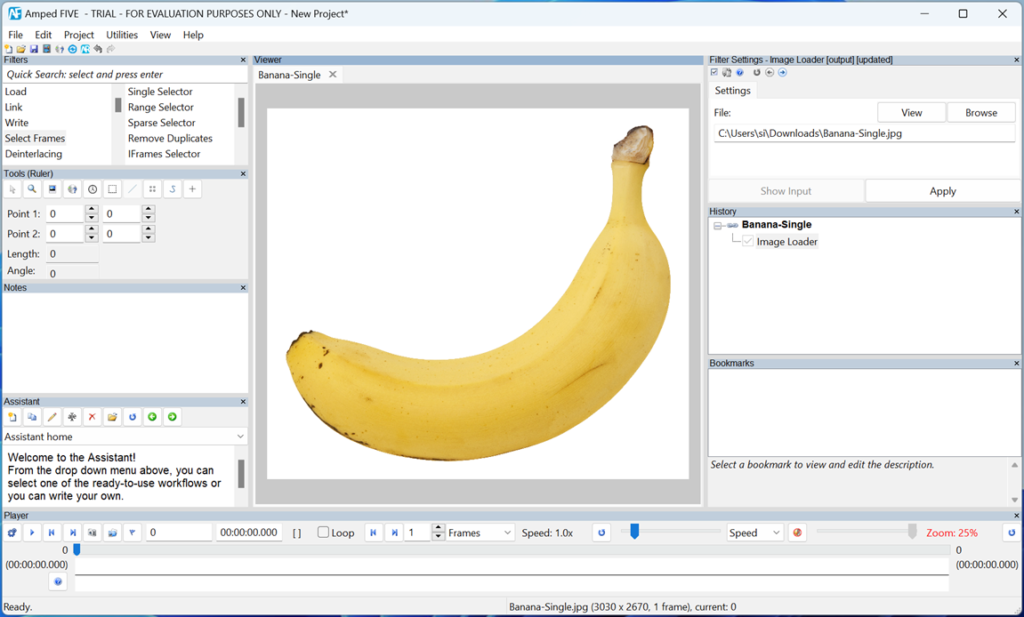
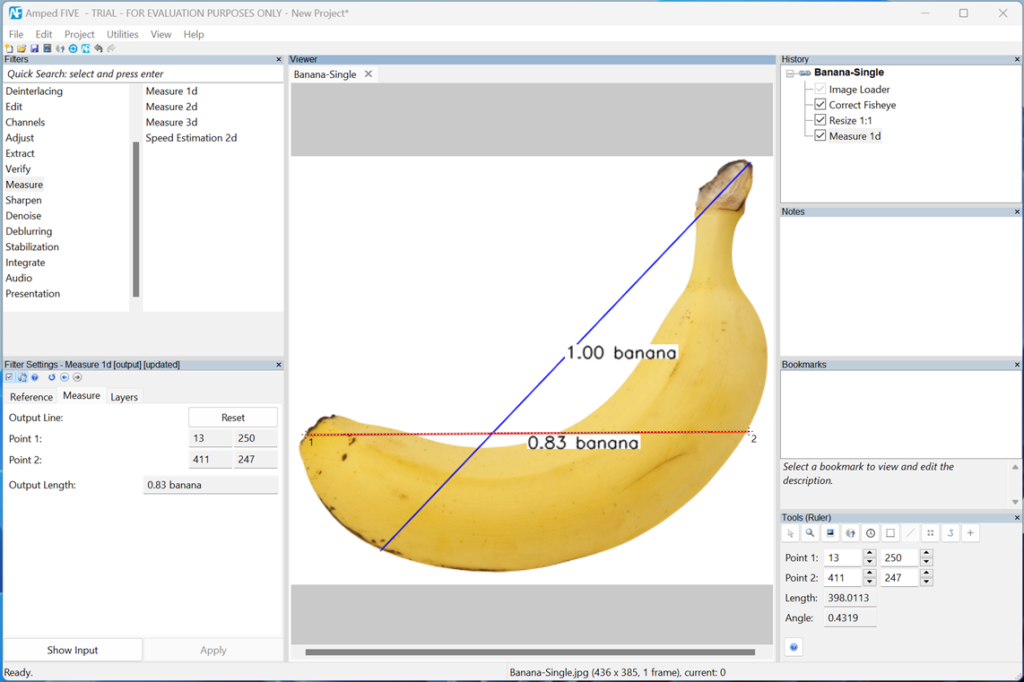
The overall usage paradigm though is generally sound. You apply “filters” to your image or video, and these in combination lead you to the results that you are after. For example, in a particular examination you might apply a “Load->Image Loader” filter to bring an image into the application; you may then apply an “Edit->Correct Fisheye” to remove lens distortion and then a “Measure->Measure 1d” to find out how long an object is. These actions are recorded in a “Chain”, and the filters within a chain can be enabled, disabled, or reordered as you desire[6]. I’m a pedant, I know – but I do think that these shouldn’t all be in the same category of “Filter” – “functional” (such as load), “altering” (such as removing distortion) and “informational” (such as measuring) don’t all fit the definition of “Filter” to me.


It’s easy to be critical, and UI/UX is very hard to do well. At the end of the day, Amped FIVE is a tool that you’ll need to learn, and it has a bit of a learning curve to it, but this is not something that someone who may have to give evidence on its output should struggle with!
There is one feature of Amped FIVE however that I want to see rolled out universally across all forensic software globally. References. I love this feature. (I’ve told Martino Jerian this on more than one occasion.) When you generate a report, it lists the filters that you’ve used and the references to how they work. For example, if I use the “Measure 3d” filter, I can now tell you that it’s based on a paper by A. Criminisi, I. Reid and A. Zisserman called “Single View Metrology”. I love this feature! I’d love to see more of this clear academic background and research represented in the training. I feel that the balance between practical and theory is skewed a little too far in favour of just using the tool, rather than covering the basic understanding of what’s going on under the hood. Again, this is a personal opinion on the matter, and I’ve spent a lot of time teaching other people theory in various academic institutions, so take from that what you will.
That was a neat segue to return to the “Measure” and “Speed Estimation” filters. The observant amongst you (You’re forensic examiners! I hope that’s everyone!) will have noticed that “Speed Estimation” is a “2d” filter – perhaps that’s not as one might have imagined, given that cars tend to move in 3d space. In fact, it does make sense when you understand that the measurement must happen at the points of a known plane, rather than a free space movement measurement. This shouldn’t prove to be an issue if you are measuring the speed of an object that is touching the ground at regular intervals – one can assume that the contact point is within that plane, and thus distance can be measured. If your object has left the ground, however, all bets are off.
The known plane in which your object is moving has to be defined – so we take a rectangular area of the road surface that we know the dimensions of and delineate this, entering the relevant measurement data. Depending on your luck and your scene, this may be straightforward – one of the training examples has lovely squares of concrete of known dimension – or less so – another training example has a few cracks in the road surface, a manhole cover and a dirt track off to one side to work with to try and draw a “rectangle” of known size. Once this task is complete, the process of working through the video – frame by frame – and tracing the path of the object within the plane from that contact point begins.
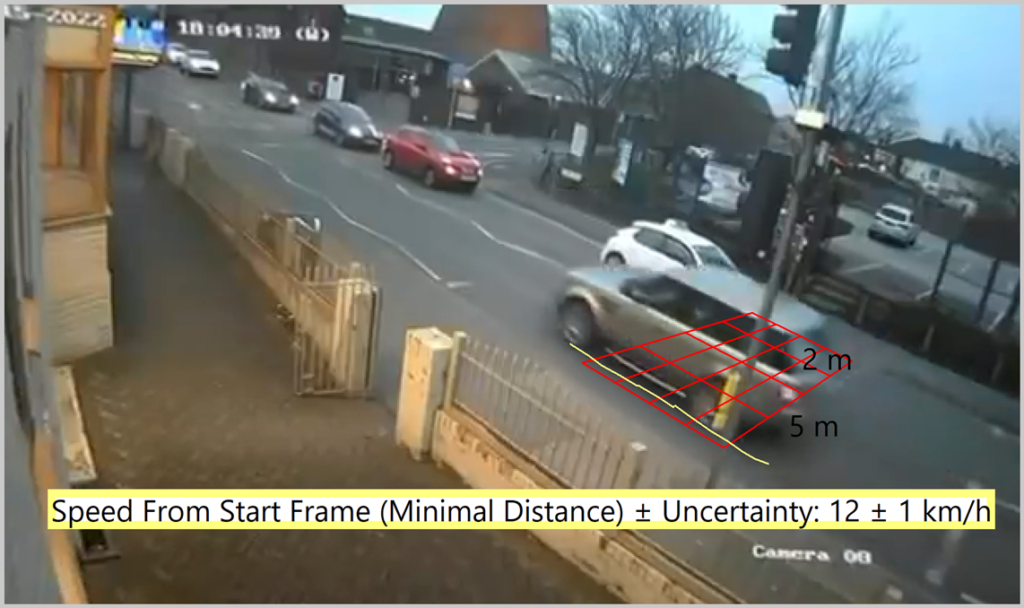
Amped FIVE takes the information that you’ve entered and calculates the distance travelled from this. It then takes the information that it has obtained from the video playback rate for each frame and figures out the time. Et voila – distance and time so we have speed … (It also takes the time to figure out the margins of error for you and let you know what these are, which is hugely important.)
As with most digital forensics, you could do this all manually if you felt so inclined – so there isn’t really any “magic”, but I really wouldn’t want to if I could avoid it! The behind the scenes mathematics becomes apparent when you output the report, with all of the relevant details contained within (and the references!).
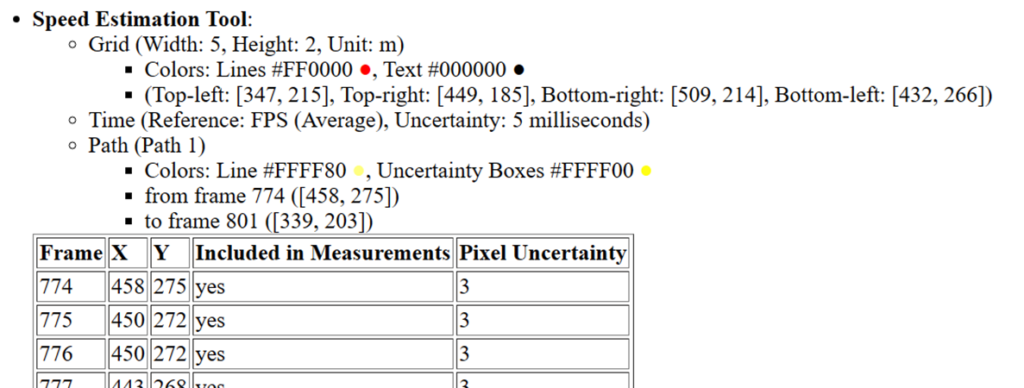
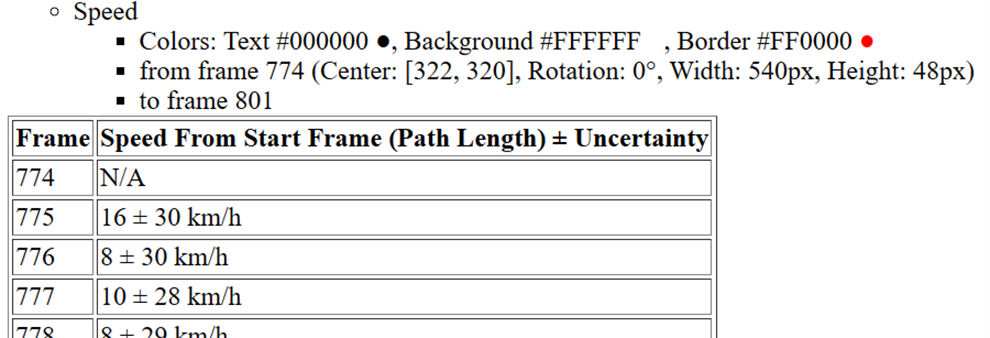
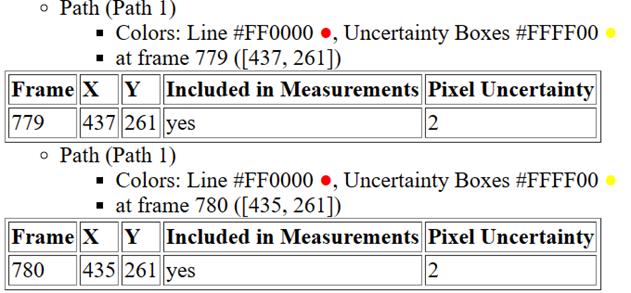
There is definitely some skill in getting the filter set up. Choosing a good contact point (bottom of tyre) and consistently applying it over the path takes practice. During the training – most of all at the very beginning – I was getting some wildly inaccurate readings, and I did quite frequently make a mess of laying out my reference plane. (Something, pleasantly to my surprise, which seems to have stuck – as in creating the screenshots it all worked fine on the first attempt.) For “Speed Estimation 2d”, I doubt that I would have gotten there without the training. I figured out the other “Measurement” filters without too much trouble, although again, practice makes perfect – especially with the 3d one, choosing good reference lines and measures is a good mix of art, science, and experience. “Speed Estimation 2d” though isn’t intuitive in and of itself – it makes sense, but it isn’t something that you can just come in and pick up. There also – to my mind – is a need to have an understanding not only of the basic equations and principles of physics and spatial measurement but also of the frame rate and duration issues attendant in different recording devices and formats. This isn’t straightforward, and because so much of that work occurs behind the scenes in the filter, it’s not clear what the impacts might be.
It is a challenge to summarise this whole review in a closing paragraph, the “TL;DR” if you like, but I’ll have a go:
In the hands of a knowledgeable video examiner, who has familiarised themselves with the tool with training and practice, Amped FIVE is an incredibly powerful tool in their arsenal – it’s not accessible to a beginner, partially because of the interface, but mostly because of the complexity in the finer detail that requires a greater understanding of the background issues in which lies the accuracy. The training resolves the interface issues, but in my opinion, it doesn’t go far enough in addressing the other aspects. It needs more of a technical foundation for the functioning behind the filters – even just as a refresher if this is covered elsewhere in the training curriculum (this is an advanced course) or if the understanding of something like “Single View Metrology” is a prerequisite, then this needs to be notified in advance.
Perhaps the most succinct review that I can give is this: when I have the budget, I’ll be getting a copy of Amped FIVE.
[1] It’s complicated.
[2] Write up is on Forensic Focus – https://www.forensicfocus.com/event-info/event-recap-forensics-europe-expo/
[3] Quick note to Amped – the training examples were great, but please provide a written copy of the reference measurements within them. Blake said them during the course, but to come back to in order to re-run for practice purposes, they would be very useful.
[4] I mean, I’ve been a computer user for about 35 years, so I’m not exactly unfamiliar with a variety of user interface variations.
[5] It’s bare, it doesn’t leave its children on a hillside to die …
[6] Except for the “Load” this has to happen first, otherwise you have nothing to act on!








